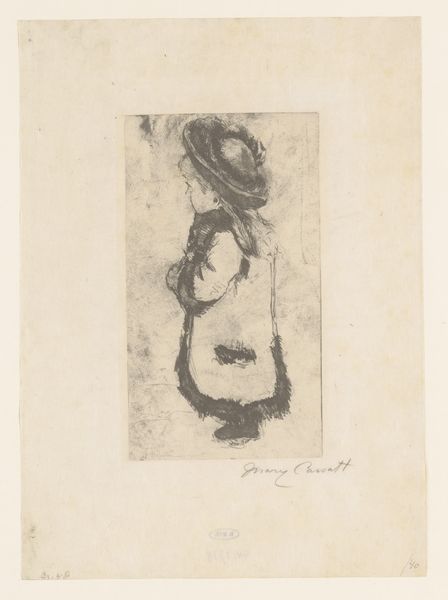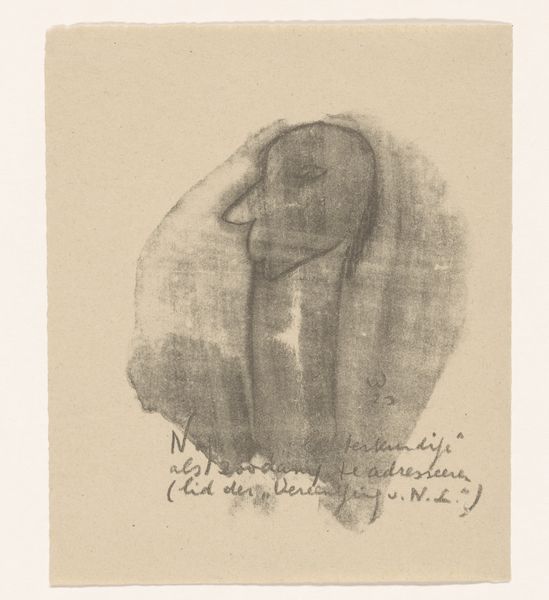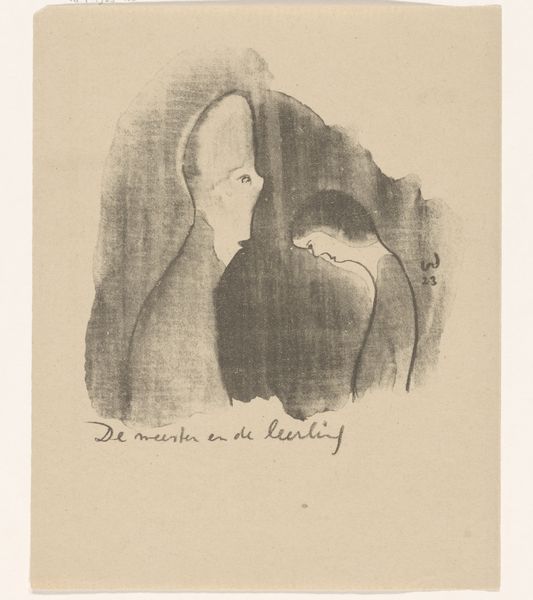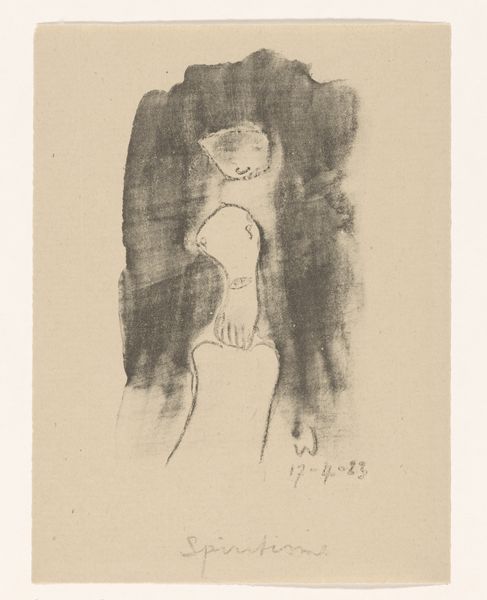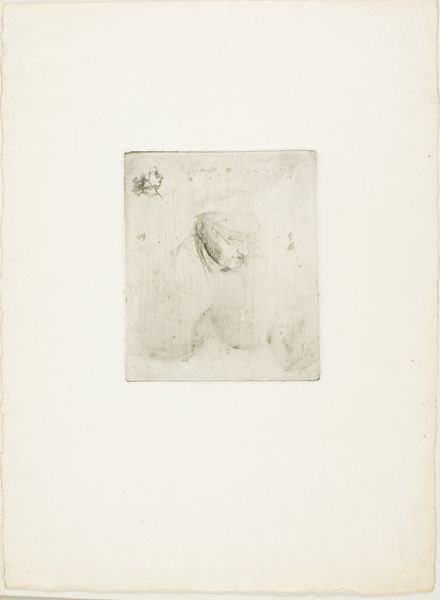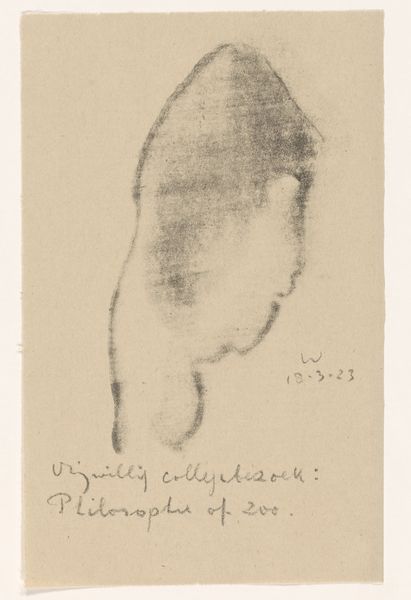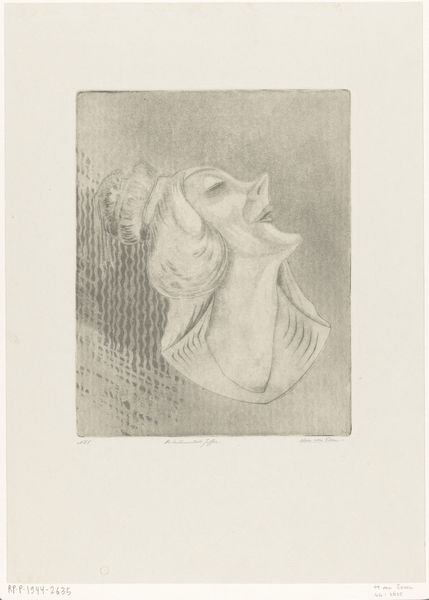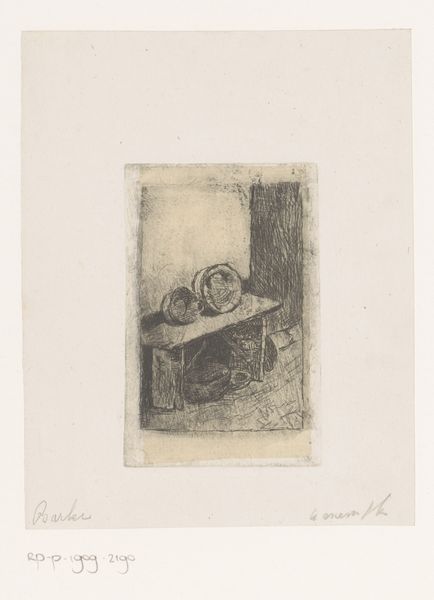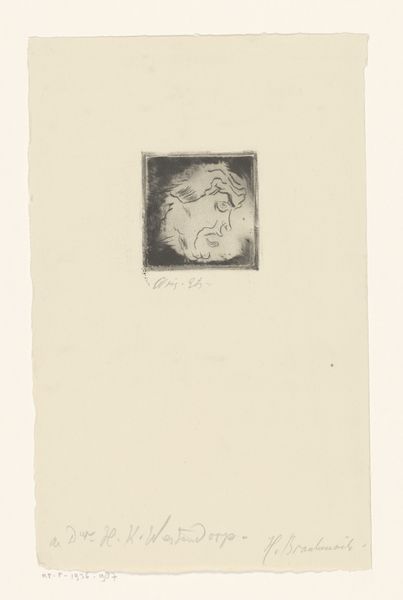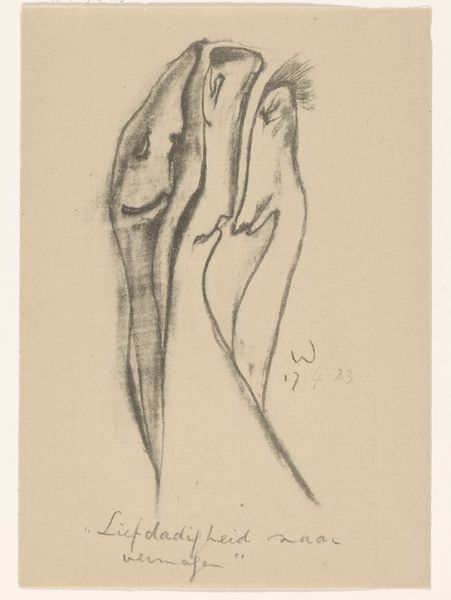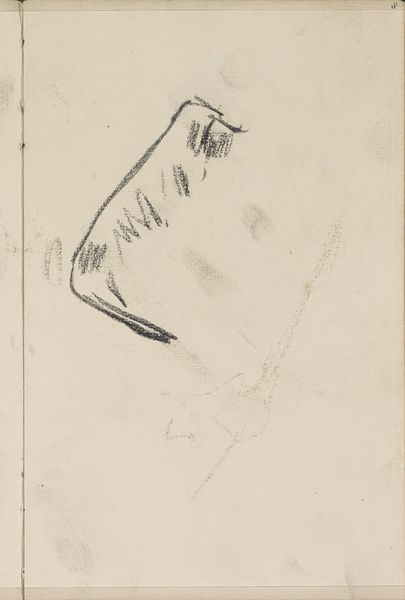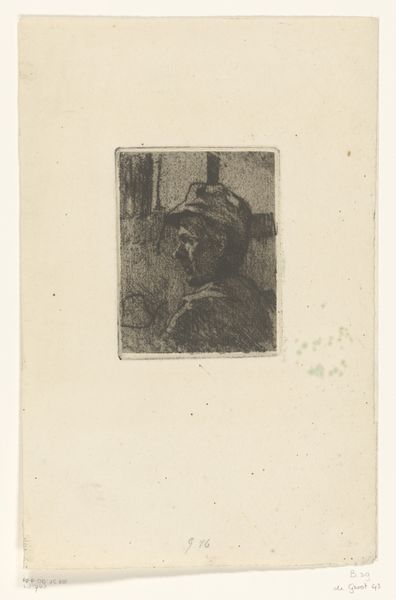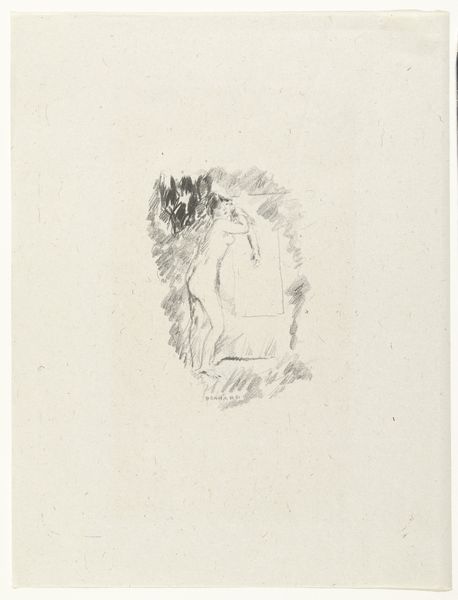
Dimensions: height 199 mm, width 144 mm
Copyright: Rijks Museum: Open Domain
Erich Wichmann created this artwork, Geabstraheerd gezicht, around 1923, using a dry drawing material, likely charcoal or graphite, on paper. The powdery quality of the drawing material allowed Wichmann to create a soft, nebulous form, obscuring the sitter’s identity and imbuing them with a quiet presence. The drawing has a handmade quality, and the smudges and irregularities of the material are evident, revealing the artist's hand. Although this process might seem quick, it is worth considering the value placed on this sort of work, and the perception of drawing as a less labourious process, as opposed to, for example, a painting. Wichmann was challenging those traditional hierarchies in the art world and creating an intimate and immediate connection between the viewer and the artwork. Ultimately, the act of drawing is an act of close observation and interpretation, a translation of the visible world through the artist's hand. It embodies a unique blend of artistic expression, material exploration, and social commentary.
Comments
No comments
Be the first to comment and join the conversation on the ultimate creative platform.
